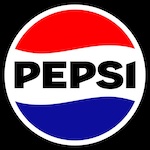Pepsi®
How Pepsi® turned a rebranding into increasing sales with TikTok


The Objective
Presenting: a new Pepsi®
It's hard not to notice when a brand goes through a rebranding. After all, it's not every day that a logo and product packaging change. Usually, the real challenge is to ensure that this rebranding is well-received by the community and ends up bringing the brand closer to more consumers.
This was exactly the scenario that Pepsi® was facing: the soft drink brand had a new look to show the world. New logo, new packaging, new visuals and all. And on TikTok, the brand wanted to ensure that this message would not only be sent to as many people as possible, but also stick in the community's memory – and attract more people interested in the drink.
The Solution
Context (with reach & frequency) is everything
If the idea was to spread a message, having lots of reach surely was essential. But that's not all: since the idea was also to establish this new brand, context could help a lot. And when we talk about context, TikTok Pulse is key.
Pulse brings branded content close to the top 4% of videos with the most engagement on TikTok. It's a very privileged position. Just imagine: someone sees a video that's going viral on the platform (and is 100% brand-safe, of course), and right after that, an ad for your campaign comes up.
The content could be from a category that is closely related to your product, such as food (Pulse Lineups), or it could simply be something that is going viral (Max Pulse). Just being close to it makes your ads more relevant to those watching, and also drive favorability and purchase intent – because, you guessed, the context in which the brand is inserted matters. That's exactly what Pepsi® needed for this rebranding strategy.
In addition to TikTok Pulse, the brand added Top Feed to the solution package, to place its ads in the first position for advertisement on the TikTok For You page. It is also a privileged space, especially for an advertiser who wanted to make its message reach as many people as possible. Finally, the media strategy also included In-Feed Ads with interactive add-ons to take frequency – and engagement – through the roof.
But advertising solutions aren't everything in life. That's why Pepsi® also went all out with its creatives and brought in its ambassador, Marcos Mion, to star in branded content highlighting the new brand's look. The videos focused on Pepsi® Black, the sugar-free version of the soft drink, and the message "Enough of 'maybe', now it's TAKE THIS" – a play on Pepsi®'s old slogan in Brazil, if you're not familiar.
The creatives were promoted alongside others made by talents recruited via TikTok Creative Exchange (TTCX). The platform connected the brand with creative partners, who helped it produce more native content to further boost results.
And finally, when it came to measuring the results, Pepsi® also brought something new to the table: in addition to a Brand Lift study to assess the impact on brand metrics, the advertiser added a Sales Lift to the campaign, a Nielsen commissioned study – the first of its kind done with a brand on TikTok in Brazil – to understand the potential effect on sales.
This type of analysis assesses the likely impact of the campaign by comparing the brand's total sales volume in exposed and control markets. These are equivalent and comparable regions, whose only major difference is the exposure to the company's ads on TikTok.
People in an exposed location, as the name suggests, see the campaign, while those in the control location do not. The difference in sales volume between each pair of locations is called incremental results and can ultimately be attributed to the campaign on TikTok.
The campaign's media strategy was entirely developed and conducted by the agency Ampfy.
The Results
Rebranding turning into more sales
The combination of reach, context, branded content and creators brought great results for Pepsi®. By using Pulse, Top Feed and In-Feed Ads, the brand ensured a good weekly frequency for almost the entire campaign, with ads showing up more than twice a week – as recommended by our Brand Basics, the basic principles of branding on TikTok.
The brand actually managed to check all four items in this best practices manual, and this was reflected in the results of the Brand Lift study that covered the campaign. Reaching more than 40% of the target audience over 7 weeks, with a variety of creatives and a balanced combination of ads formats, the strategy yielded an incremental lift of 14.2 points in Ad Recall.
But more than just building the new brand, the campaign also had its impact on sales, as Pepsi® discovered with the commissioned Nielsen commissioned Sales Lift study. Based on statistical evidence, the analysis revealed an incremental lift of 2.5% in the brand's overall sales.* This change, according to the data, would not have happened if it were not for the execution of the campaign on TikTok.
This lift in sales was driven by Pepsi® Black, but it was not caused by it alone. Although the sugar-free version of the soft drink was the star of the rebranding campaign, the study identified a halo effect, with more products getting a an increase in sales in the same period, such as Pepsi® Twist. And again, all thanks to TikTok, according to the study.
You see how a good branding strategy on TikTok can have an impact through the entire marketing funnel? Now just imagine if this was a full-funnel campaign, with CTAs focused on selling... For Pepsi®, the plan now is to focus on the entire journey and try to make these results even better.